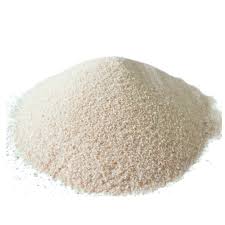Precision Filter Sands: The Backbone of Municipal Water Purification
In municipal water treatment, ensuring clean and safe drinking water is a top priority. One critical component in this process is precision filter sands, which play a vital role in removing impurities from water. These specially engineered sands are used in filtration systems to achieve high clarity and meet stringent health standards. This blog post explores the importance of precision filter sands, how they work, and their impact on municipal water purification.
WATER PURIFICATION
5/22/20251 min read


Precision filter sands are high-purity, uniformly graded silica sands designed for use in water filtration systems. Unlike regular sand, these grains are carefully processed to meet specific size, shape, and purity standards, ensuring optimal performance in removing suspended solids, sediments, and contaminants from water. Typically sourced from high-quality silica deposits, precision filter sands are engineered to have consistent grain sizes (e.g., 0.45–0.55 mm for rapid sand filters) and low levels of impurities like clay or organic matter.
In municipal water treatment plants, precision filter sands are used in rapid sand filters or multimedia filters, often as part of a multi-stage purification process. Here’s how they function:
Filtration: Water passes through layers of filter sand, which trap particles as small as 20–30 microns, including dirt, debris, and some microorganisms.
Backwashing: Periodic backwashing flushes out trapped impurities, maintaining filter efficiency and extending the sand’s lifespan.
Layering: In multimedia filters, precision sands are combined with other media like anthracite or garnet, with each layer targeting different particle sizes for enhanced filtration.
This process ensures that water meets regulatory standards, such as those set by the U.S. Environmental Protection Agency (EPA), which requires turbidity levels below 0.3 NTU (nephelometric turbidity units) in 95% of treated drinking water samples.
High Efficiency: Uniform grain size and shape maximize particle capture, improving water clarity.
Durability: High-purity silica sands resist degradation, ensuring long-term performance in harsh conditions.
Cost-Effective: Precision sands require less frequent replacement and maintenance compared to lower-quality alternatives.
Compliance: They help municipalities meet strict health and environmental standards by removing
While precision filter sands are highly effective, their performance depends on proper selection and maintenance. Sands with inconsistent sizing can lead to channeling, reducing filtration efficiency. Additionally, regular backwashing is essential to prevent clogging, and operators must monitor sand quality to avoid contamination over time.
